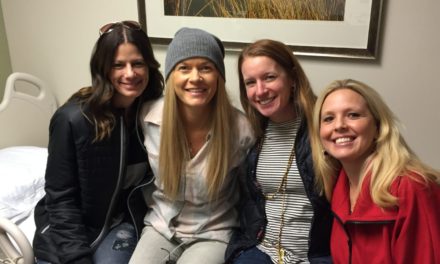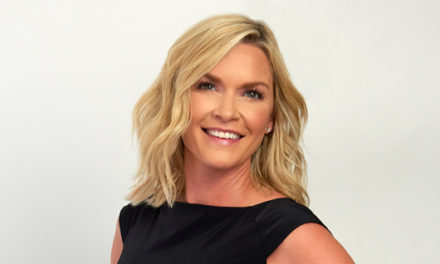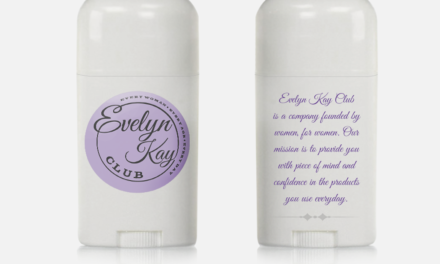 I first heard about cold caps from another Stage 3C ovarian cancer survivor who had used them and had great success with them. It’s a crazy process where you put your scalp through hypothermia before, during and after chemo treatments using special cold caps. The cold constricts blood vessels and is thought to limit the amount of chemo that reaches those areas – so, your hair follicles can still grow!
I first heard about cold caps from another Stage 3C ovarian cancer survivor who had used them and had great success with them. It’s a crazy process where you put your scalp through hypothermia before, during and after chemo treatments using special cold caps. The cold constricts blood vessels and is thought to limit the amount of chemo that reaches those areas – so, your hair follicles can still grow!
As the American Cancer Society explains about cold caps, “Success of scalp hypothermia may be related to the types of chemo used, the chemo dosage and how well the person tolerates the coldness.”
More: My anti-toxin secret to keeping aluminum out of my body!
Well, my life was stressful enough at the time and honestly I didn’t want to put any more work or stress on the nurses’ or my family’s plate while they were administering 17 months of treatments, so I chose not to try it. Honestly, I didn’t think losing my hair would be so difficult. But it ended up being one of the darkest days I encountered through my journey. I LOVE my short hair now and am proud to rock it but there are times I wished I would of just tried the caps to see if they would of worked for me. Now I pray I’ll never get the chance to use them 😉
Even though I didn’t try cold caps, I’m all about sharing everything I’ve learned about them so YOU can make your OWN decision! What’s right for one person will not be right for everyone. Get as educated as you can so you can feel confident in the decisions you make – and then don’t look back!
I found two great resources for you on this topic. Dr. Chasse Bailey-Dorton is co-medical director for Survivorship & Integrative Oncology at Levine Cancer Institute in Charlotte, and Lisa Ferrand is a breast cancer survivor who had such a positive experience with cold cap therapy, she recently launched WarriorCaps.com to help other women navigate the process.
Let’s talk science first
Dr. Bailey-Dorton cited a study that found cold-cap therapy is an effective and well-tolerated method to prevent hair loss in women with breast cancer receiving various chemotherapy regimens.
“Typically, the cap is worn 30 to 60 minutes before the start of each chemotherapy session,” Dr. Bailey-Dorton explained. “Then, every 30 minutes, throughout the chemotherapy infusion, a new frozen cap is placed on the head. The patient continues to reapply the frozen caps for 30 minutes (for up to 4 hours, depending on the chemotherapy regimen) after the chemotherapy infusion has completed.”
Dr. Bailey-Dorton cautions, “With some chemotherapies, the results may not be as good. Patients need to understand that without long-term follow-up data and further research, there could be a slightly higher risk of developing a scalp or skull metastasis by using CCT. That said, based on published studies, the current evidence does not suggest any increased risk. It is very important to discuss CCT with your oncologist before you decide to use it.”




